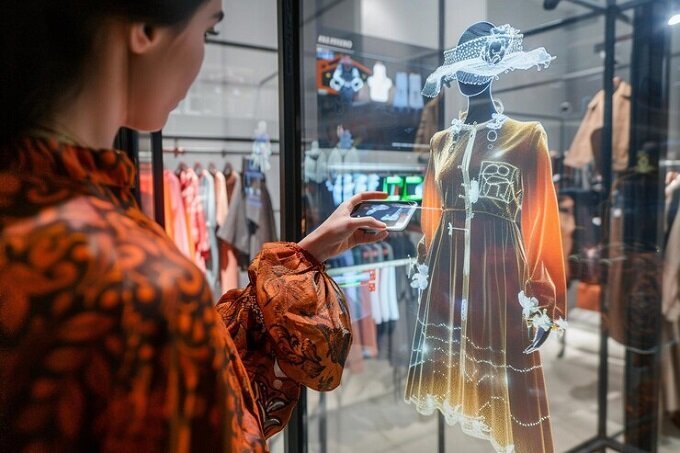
Can Smart Technology Be Integrated into Fashion?
Technology continues to evolve and change the world of fashion. From wearable tech to smart technology fabrics, innovations in smart textiles and fashion technology have the potential to revolutionize the fashion industry. This article explores how technology can be seamlessly integrated into fashion to create functional, sustainable, and personalized garments.
The Growing Relationship Between Fashion and Technology
The lines between fashion and technology are blurring. The rise of wearable devices like smartwatches and fitness trackers has paved the way for technology companies and fashion brands to collaborate. Augmented reality technology is changing how we shop, with virtual try-on and personalized recommendations. Even fashion shows are embracing tech, with virtual audiences and digital runways.
It’s clear that technology continues to advance and will play a pivotal role in shaping the future of fashion.
The Evolution of Smart Textiles and Wearable Tech
Smart textiles and wearable technology refer to fabrics and clothing embedded with electronics that can sense stimuli from the environment and react. Examples include smart watches that track your heart rate, or smart clothing that changes color.
The origins of smart textiles stretch back to the 1950s, with the invention of electrically heated gloves. In the 1960s and 70s, focus shifted to developing conductive yarns and fabrics. The 1990s saw increased research into integrating sensors and computing technology into textiles.
Key advancements that have enabled the integration of technology into fashion include:
- Materials science to create conductive, waterproof, and flexible fabrics
- Miniaturization of electronics to seamlessly integrate components into garments
- Growth of wearables and smart devices, providing a foundation for smart clothing
- Advances in artificial intelligence and software to impart more intelligence into fabrics
With these innovations, early niche products like fitness trackers have evolved into a thriving wearable tech industry. Smart fabrics and wearables are now poised to transform mainstream fashion.
Potential Applications of Smart Textiles in Fashion
Smart textiles open up exciting possibilities for fashion design. With integrated sensors, haptics, lighting, and other technology, garments can be engineered for:
- Enhanced functionality – jackets with integrated solar panels, self-cleaning fabrics, waterproof boots with grip sensors
- Health monitoring – shirts that track heart rate and respiration, masks that monitor air quality
- Adjustable comfort – dresses with embedded cooling elements, shirts that heat up or cool down
- Aesthetic appeal – illuminated clothing, dresses that change color patterns
- Personal expression – garments that shift appearance based on social media feeds
Smart fabrics enable fashion that is multifunctional, interactive, and customizable in ways not possible with traditional textiles. The practicality of “clothes as gadgets” is improving as technology gets more discreet and seamless.
Challenges of Integrating Tech and Fashion
While promising, effectively merging technology and fashion poses challenges:
- Durability – electronics must withstand wear, washing, weather, and damage
- Flexibility – smart fabrics have improved but can still restrict movement
- Comfort – excess weight and bulky tech makes garments uncomfortable
- Aesthetics – it’s difficult to make tech discreet yet fashionable
- Cost – developing and producing smart textiles remains expensive
Additionally, lack of standardization and regulations in the industry hinders mainstream adoption. There are also privacy concerns around wearable data.
Overcoming these limitations will be key to unlocking the potential of smart fashion. It requires innovative thinking around design, materials, manufacturing, and user experience.
Developing Truly Sustainable Smart Textiles
Sustainability is a major concern in the fashion industry that also applies to wearable tech. E-waste from discarded smart devices is a huge problem. Production of electronics and smart textiles consumes lots of energy and rare earth metals.
To develop eco-friendly smart fabrics, brands are innovating with:
- Recycled materials – fabrics woven from recycled plastic or e-waste
- Organic fabrics – cotton, silk, and wool integrated with tech
- Biodegradable circuits – silk protein, soybean oil, and other natural materials
- Renewable energy – solar charging panels woven into jackets
- Circular business models – clothing as a service, repairing smart garments
Sustainability should be a priority as smart fashion scales up.
Current Applications: The Cutting Edge of Smart Fashion
On the cutting edge today, we see smart fashion integrated into:
Interactive Fashion – dresses wired with LEDs controlled via smartphone, jackets that display social media feeds
Digital Couture – designer garments with animated textures, robotic accessories, 3D printed gowns
Smart Sportswear – clothes that track performance, provide haptic feedback, and adjust temperature
AI-Driven Personalization – brands like Unmade offer customization and made-to-order pieces
Immersive Shopping – augmented and virtual reality transform virtual try-on and digital fashion shows
With growing computational power and miniaturization, fashion tech will become more discreet, functional, and personalized.
The Future Role of Smart Tech in Luxury Fashion
Luxury fashion brands are beginning to experiment with smart tech through collaborations with technology companies. Some examples include:
- Ralph Lauren’s Polo Tech shirt that biometric readings during workouts
- Tommy Hilfiger letting shoppers digitally “try on” outfits using augmented reality
- Burberry created an immersive show experience using Twitch’s live-streaming technology
For high-fashion brands, smart tech can enhance exclusivity through unique digital experiences and internet-connected clothing. It provides new avenues for personal expression and reinforcing brand identity.
Where Next? Exciting Innovations on the Horizon
Experts predict several key developments that will shape the future of smart fashion:
- Rapid prototyping with 3D printing allows completely customized garments
- Blockchain technology will disrupt manufacturing, inventory management and tackle counterfeiting
- Advances in materials science will improve breathability, biocompatibility, and machine washability
- AI algorithms will enhance personalized recommendations, predictive sizing, and virtual try-on
- 5G and edge computing will enable real-time analytics and interactions
- Neurofabric that interfaces with the nervous system for biometrics and haptics
- Solar textiles, kinetic energy fabrics, and miniaturized batteries will address power limitations
Overcoming Barriers to Mainstream Adoption
For smart fashion to gain widespread adoption, certain barriers need to be addressed:
- Bringing down costs through innovative manufacturing and economies of scale
- Developing industry standards around materials, privacy, recycling, and data formats
- Educating consumers on the benefits and safe use of smart fashion tech
- Cultivating a willingness to embrace tech-enabled clothing in everyday life
- Fostering collaboration between the fashion and technology sectors
- Ensuring smart tech adds value and enhances clothing rather than becoming gimmicky
Conclusion
The fusion of fashion and technology holds exciting potential to revolutionize the industry. As smart fabrics and wearable tech advance, fashion is embracing innovation to meet the demands of modern consumers. While challenges remain, seamlessly integrating technology into clothing could usher in a future of functional, customizable, and sustainable fashion. Brands, researchers, and consumers must work together to fully unlock the possibilities.






